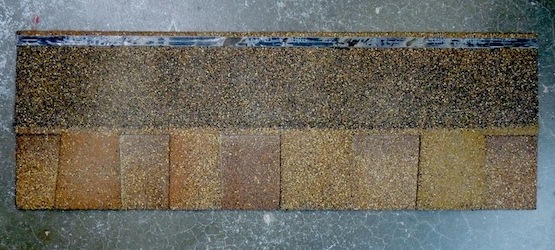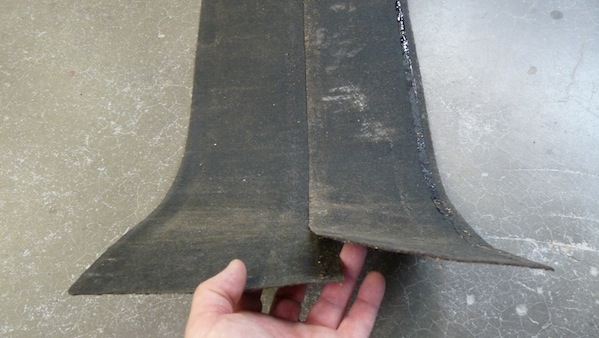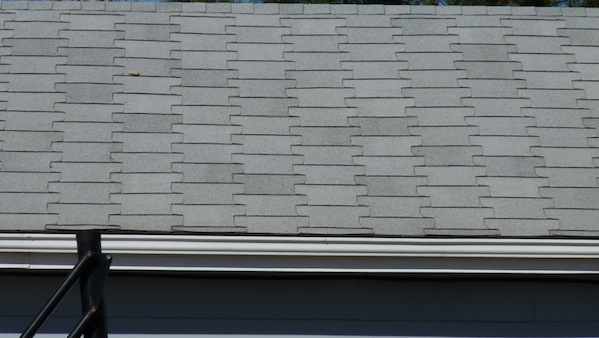Mastering Roof Inspections: Asphalt Composition Shingles, Part 6
by Kenton Shepard and Nick Gromicko, CMI®
The purpose of the series “Mastering Roof Inspections” is to teach home inspectors, as well as insurance and roofing professionals, how to recognize proper and improper conditions while inspecting steep-slope, residential roofs. This series covers roof framing, roofing materials, the attic, and the conditions that affect the roofing materials and components, including wind and hail.
During inspections of roofs with asphalt shingles, you may see one of four basic types: three-tab, laminated, interlocking, or single-piece shingles.
There are variations of these basic types that affect their appearance, weight, performance and durability.
Three-Tab Shingles

This is a three-tab (or 3-tab) shingle. It’s a type of strip shingle.
Its main identifying feature is two notches, called cutouts, which separate the lower part of the shingle into three tabs, as you can see here. A three-tab shingle is a single layer thick, usually 12 inches wide and 36 inches long. Metric shingles are a little larger but are less common in the U.S.
Three-tab shingles typically have warranties in the 20- to 30-year range, weigh 200 to 250 pounds per square, and are designed to survive winds of up to 60 miles per hour.
Laminated or Architectural/Dimensional Shingles

This is an example of a laminated shingle, also called an “architectural” or “dimensional” shingle. Both laminated and 3-tab shingles are considered to be strip shingles.

Laminated shingles consist of two or more shingle layers bonded together. The uppermost layers are smaller and cut into shapes.

Laminated shingles with 30- to 50-year warranties typically weigh 250 to 300 pounds per square, and are designed with a maximum wind resistance of 70 to 110 miles per hour.
High-Quality Laminated Shingles

Here’s an example of a high-quality laminated shingle. Some of the more expensive laminated shingles may have up to five layers and weigh close to 500 pounds per square. These shingles may be designed to withstand winds of up to 130 miles per hour.
Interlocking Shingles

These are examples of the most common type of interlocking shingle. They’re called T-locks. Although they’re not installed anymore, many homes were roofed with T-locks which are still in place, and many of them are still in good condition.
T-lock shingles have no adhesive strip, so they rely on the interlocking profile and fasteners to hold them in place.
The manufacture of T-locks ended about 2006.
CALCULATING and PACKAGING SHINGLES
**************************************************
Learn how to master a roof inspection from beginning to end by reading the entire InterNACHI series: Mastering Roof Inspections.
Take InterNACHI’s free, online Roofing Inspection Course
Mastering Roof Inspections
Roofing Underlayment Types
Inspecting Underlayment on Roofs
Fall-Arrest Systems
Roofing (consumer-targeted)
More inspection articles like this

